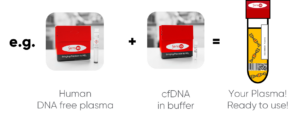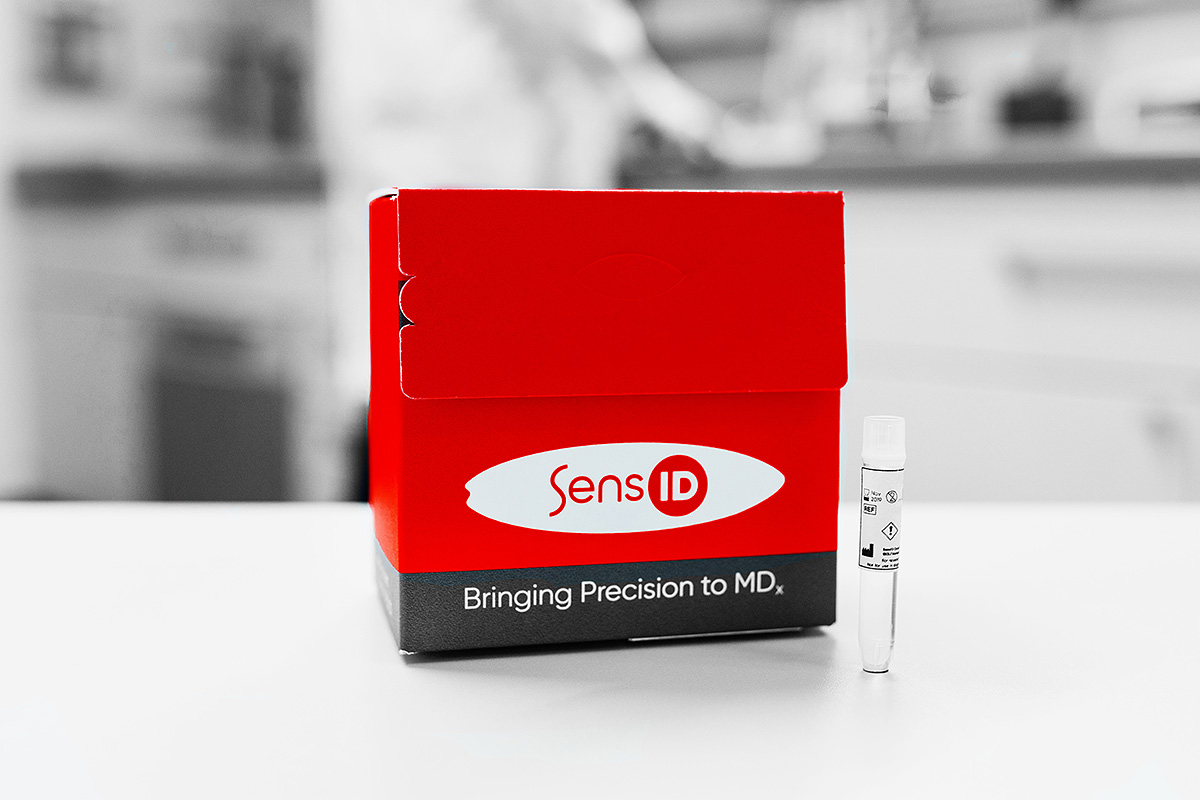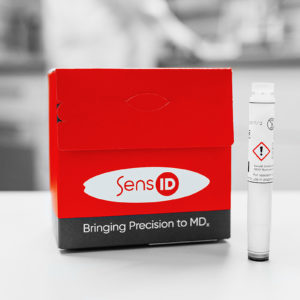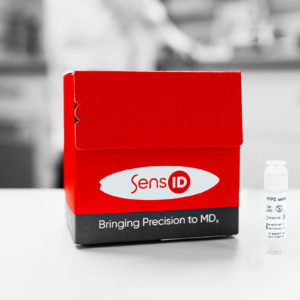Product description
Tailored to your needs: From bulk delivery and custom batch sizes to self-crafted with the corresponding cfDNA in buffer product!
OEM options:
If you need materials as in kit controls or as a third party control for validation of your kits at customer labs, please contact us via: sales@sens-id.com
Self-Crafted Solution:

How to create your full workflow plasma control material:
If you prefer to make your own full workflow controls we recommend using our DNA depleted plasma products. Blend the DNA as necessary with the DNA depleted plasma to receive plasma materials with the necessary DNA concentrations.
This product as cfDNA in buffer can be found here:
- 5-Gene-Multiplex Set SID-000095
Combine with:
- 5 ml human Plasma (human-tech) 1-fold concentrated
- 40 ml human Plasma (human-tech) 1-fold concentrated
- 1,000 ml human Plasma (human-tech) 1-fold concentrated
And create your own plasma materials.
These products are ideal for digital PCR and/or Next Generation Sequencing (NGS). In particular:
– Validation and development of sequencing protocols (e.g. Whole Genome Sequencing (WGS), Amplicon Sequencing) and PCR protocols
– Determination of the detectiont limit of the method
– to control the extraction efficiency
Unit Size: as desired
Mutations:
- AKT1 – p.E17K (COSV62571334*, Substitution, c.49G>A)
- BRAF – p.V600E (COSV56056643*, Substitution, c.1799T>A)
- ERBB2 – p.Y772_A775dup (COSV54062409*, Insertion, c.2323_2324dup)
- KRAS – p.G12D (COSV55497369*, Substitution, c.35G>A)
- KRAS – p.Q61K (COSV55502066*, Substitution, c.181C>A)
- KRAS – p.A146T (COSV55501778*, Substitution, c.436G>A)
- PIK3CA – p.E545K (COSV55873239*, Substitution, c.1633G>A)
- PIK3CA – p.H1047R (COSV55873195*, Substitution, c.3140A>G)
Allele frequencies: 0%; 0.1%; 1%; 5%
Buffer: Plasma (human-tech)
Storage: 2-8 °C
Expiry:
Stable up to 24 months after date of manufacture (as supplied). In the case of in-house production, this depends on the manufacturing conditions
Quality control
Fragmentation size: High Sensitivity DNA Kit Agilent
Allele Frequency: dPCR
Quantification:
- UV-Vis Spectrophotometry (NIST-Reference method)
- dsDNA (fluorometric measurement)
Technical background
Derived from: cell line GM24385 (HG002- NA24385 – huAA53E0)
Bioinformatics:
– lot specific sequencing files: LOT Search
– High-confidence variant calls: ftp://ftp-trace.ncbi.nlm.nih.gov/giab/ftp/release/AshkenazimTrio
– Raw datasets and bam files, currently including 10X Genomics, BioNano, Complete Genomics regular and LFR, 300x Illumina paired-end, Illumina 6kb mate-pair, 1000x Ion exome, custom moleculo libraries, ~0.05x Oxford Nanopore, and 70x/30x/30x PacBio: ftp://ftp-trace.ncbi.nlm.nih.gov/giab/ftp/data/AshkenazimTrio/HG002_NA24385_son/
*GRCh 38 Cosmic v88






